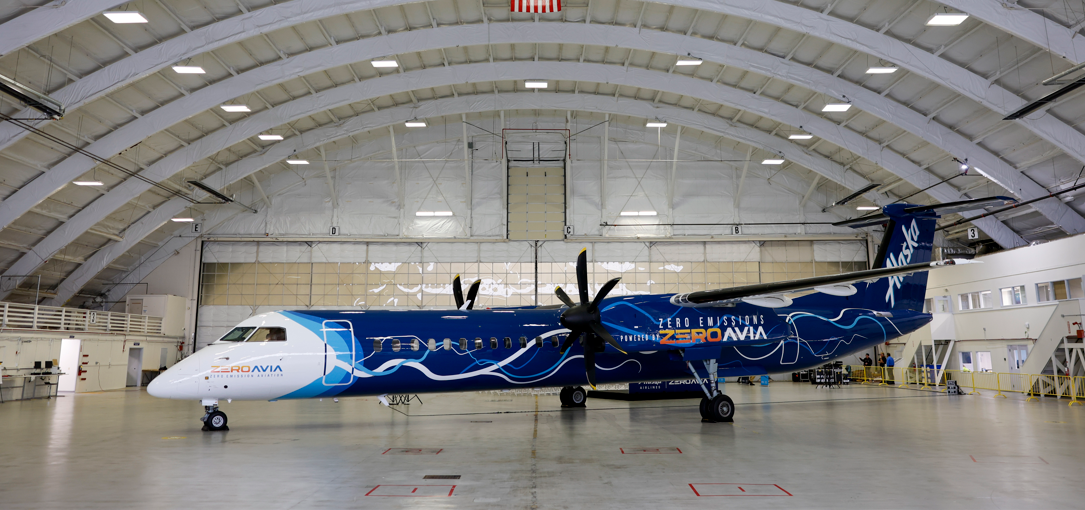
ZeroAvia teamed up with Alaska Air Group in 2021.
Alaska Air Group turned over a retired Bombardier Q400 regional turboprop to ZeroAvia to be retrofitted with fuel cells and electric motors on May 1.
The 76-seat regional aircraft is to become a demonstrator for ZeroAvia’s HyperCore electric motors and high temperature proton exchange membrane system.
The company planned to show a 1.8-megawatt prototype electric motor configuration–two Hypercore motors in parallel–spinning a propeller on a ground test rig during the aircraft handover event at ZeroAvia’s research and development facility at Paine Field in Everett, Washington.
ZeroAvia aims to fly the Q400 demonstrator for the first time in 2024, says Val Miftakhov, founder and CEO of ZeroAvia.
Alaska and ZeroAvia announced a hydrogen aircraft development partnership 2021, including plans to transfer a Q400 to the startup. The Seattle-based airline retired its fleet of Q400 turboprops in January, but kept one aircraft to be used as a demonstrator.
The airline is an investor in ZeroAvia and supplying the company with hangar space for the hydrogen fuel cell retrofit program. As part of the tie-up, ZeroAvia is to supply Alaska with at least 50 examples of its ZA2000, a propulsion system that includes HyperCore motors and the startup’s high-temperature fuel cell.
Each HyperCore electric motor is designed to provide 900 kW of power and spin at 20,000 rpm, ZeroAvia says. The electric motors are modular and power can be increased by connecting the motors in a shaft-to-shaft series.
“The reason we picked 900 kW is because two of those get us into smaller propeller aircraft like the ATR 42 [and] three of those would get us into a larger ATR 72, for example,” Miftakhov says. “Four of those will get us into the Q400s and the maximum of six can get us into the regional jets that we’re working on with Mitsubishi Heavy Industries.”
The ground test rig on display at Paine Field includes motors integrated with a Q400 gearbox and propeller.
“Most of the integration on the wing is actually done through the gearbox,” Miftakhov says. “So, having integration done with the gearbox allows for the simplest possible retrofit into the aircraft.”
The company plans to use its high-temperature fuel cells in the demonstrator. It sees the type as necessary for larger, commercial regional aircraft.
“High-temperature fuel cells are enabling technology for this,” Miftakhov says. “You cannot run this size aircraft on the traditional sort of automotive style, low-temperature [fuel cell].”
ZeroAvia started testing its high-temperature fuel cell in December and sees it reaching a system-level power density of 2.1 kW/kg in time for certification in 2027 in the initial version of the ZA2000, Miftakhov said in April.
The company is still discussing aircraft testing sites with regulators and would like to fly out of Paine Field if possible, but notes the complications of flight testing at an active airport.
In addition to its development agreement with Alaska Air Group, in 2021 ZeroAvia signed an memorandum of understanding with De Havilland Canada to develop a fuel cell retrofit for Dash 8-400 aircraft.
